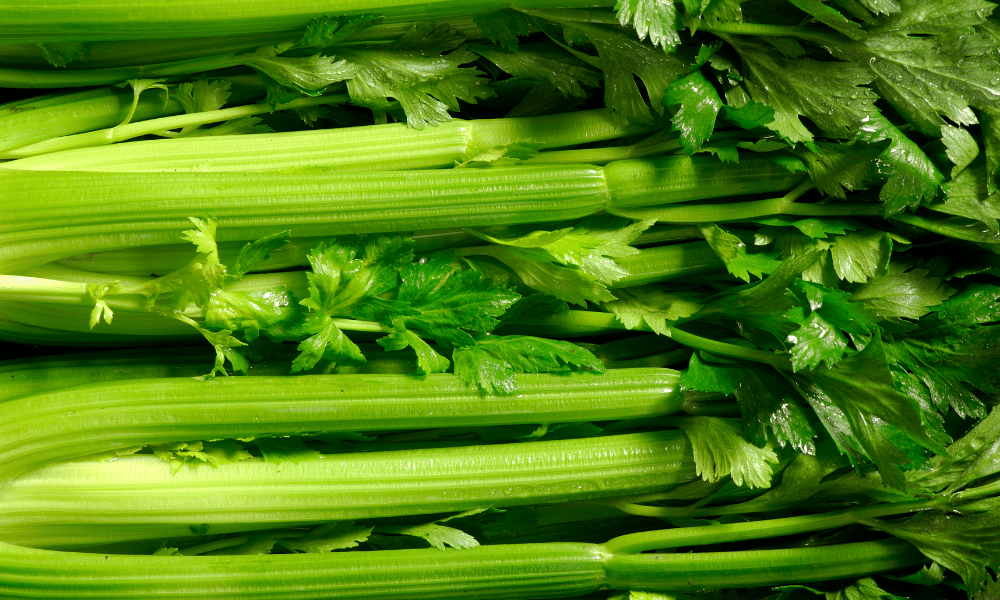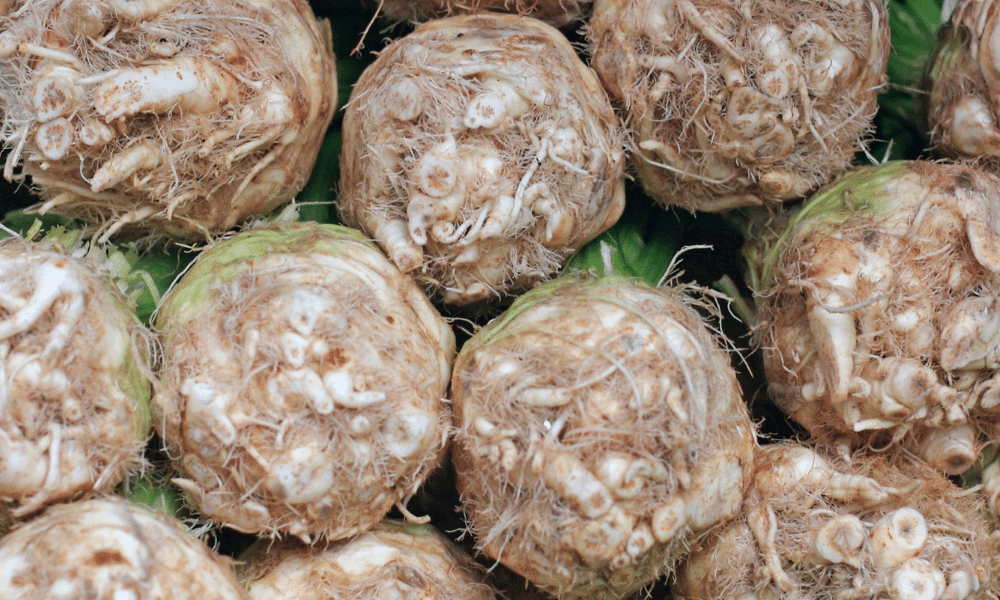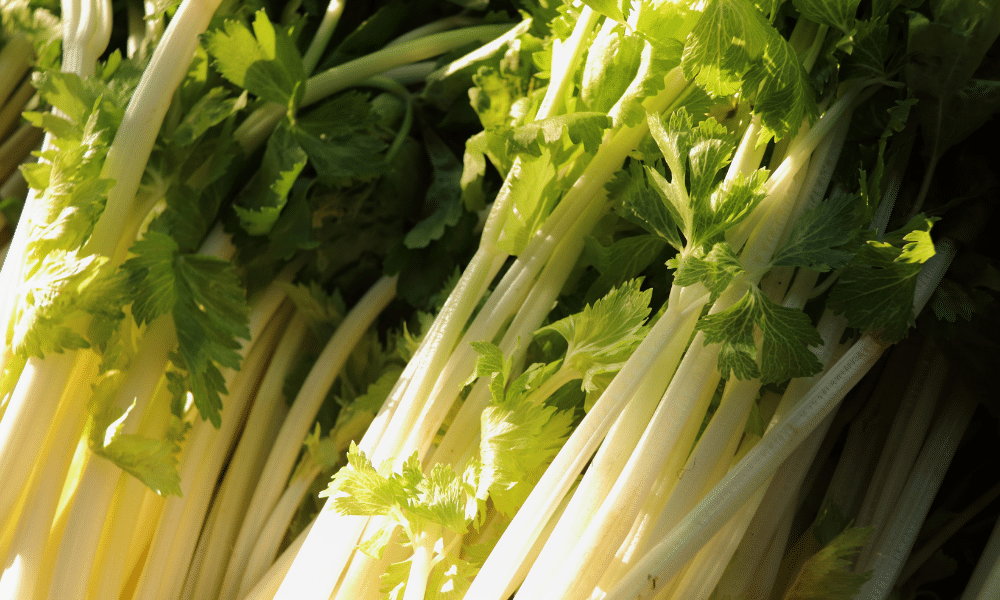Though it is a member of the parsley and celery family, lovage is a noticeable herb separate from its relatives.
It has roots in European cuisines but is now used all over the western world to help bolden a dishes’ flavours. This is why lovage is often incorporated into basic potato or stew recipes, to help give the otherwise bland ingredients an extra kick.
Lovage has ample uses. Its roots can be used as vegetables and its seeds as a spice. But it is the leafy, dark green tips that are most often used to make a dish more flavoursome.
Our 4 Substitutes for Lovage
Being closely related to parsley and celery, lovage captures the intense flavours of both ingredients. It is extremely pungent like celery but has a citrusy undertone from its parsley relations.
In terms of smell, lovage is very fragrant. Some say it smells like celery, others just label it intense. Either way, it is a common scent used in soap and perfumes.
Here are our top 4 substitutes for lovage:
1) Celery
Celery does last a fairly long time when fresh but is still quick to get rotten. That is why its stalks are often used up quickly and its leaves discarded. But both the celery stalks and leaves are full of their own flavours.
Celery leaves reflect the pungent, slightly citrusy flavours of lovage and can be used in every dish that lovage is often used in.
As for the stalks, they have a sharp, intense taste that helps to balance out overly sweet dishes.
Despite its full flavour, you will need to double the amount of celery you use when substituting it for lovage to make the flavours impact your dish.
Cook Celery Slowly
Celery is usually used too quickly and with little consideration. However, both celery leaves and stalks are full of delicious liquid that releases better over a slower cooking time. This makes it a good lovage substitute in stews and soups.

2) Celeriac or Celery Root
Celeriac is common in many supermarkets, placed with other root vegetables rather than celery. It is knobbly and very root-like, not offering much to your dish in terms of aesthetics.
Despite looking fairly ugly, celeriac takes the flavours of lovage and twists them slightly.
Raw, celeriac is just as intense as lovage though will not taste as pleasant as raw celery stalks as it is still a root.
When cooked, celeriac does mellow out but also takes on a sweet taste with a hint of nuttiness. This is where its earthy notes also kick in. These slight flavour differences make it a substitute better suited for hearty soups and richer meals.
Boil First
As a root, celeriac requires longer to soften up. If not given this time, then it will remain a tough and unpleasant texture. Boiling your celeriac before adding it to your dish will not only softer the root but will also encourage it to release more flavours.

3) Chinese Celery
If you happen to frequent an Asian market, then you could always pick up some Chinese celery and substitute that for lovage. Unfortunately, outside of Asian grocers, Chinese celery is difficult to find.
Chinese celery may have a similar aesthetic to typical celery, but it is just as pungent as lovage, making your home smell delicious when cooked.
The main difference between lovage and Chinese celery it’s the various undertones that they translate into your dish. Lovage is slightly citrusy whereas Chinese celery has a hint of pepper and little citrus flavour.
Avoid Eating Chinese Celery Raw
Unlike lovage or even typical celery, Chinese celery is extremely intense when eaten raw – and not in a pleasant way. You can eat it raw if you wish, but it is far better sauteed with rice and chicken.

4) Lovage Seeds
Your local supermarket may sell lovage seeds with lovage, but they are usually sold separately. Still, lovage seeds are worth buying for when the herb is not available.
The great thing about lovage seeds is that they have the exact same flavour as loave but will last longer than the herb, making them more worth your money.
They are also a convenient substitute for those times when lovage stalks just won’t make the cut.
Perhaps if your dish wouldn’t do well with the texture of lovage, but you still want to incorporate the complex lovage flavours?
Try Celery Salt Instead!
If you are not able to find lovage seeds, then celery salt will make a fine substitute as celery salt is often made from ground up lovage seeds. It will not be as intensely a taste but will still provide some of the lovage flavours.
Other Substitutes for Lovage
Often fresh greens end up dying before they even get used, which is why dry herbs are such a popular tool in the everyday kitchen. Here are a few dry herbs that can be substituted for lovage:
- Parsley – Being from the same family as lovage means that parsley has many of the same intense flavours. It is an extremely common, cheap dry herb that can be used in pretty much any dish.
- Fennel – Fresh lovage stalks and fresh fennel are often interchangeable, but dry fennel can be combined with some celery salt to even out harsh bitter flavours in your dish.
Summary
Lovage is a very strong, intense ingredient and so you will need to substitute it with something that has just as much power without being overwhelming.
Being so closely related to lovage, celery will make the best substitute. But other celery verities will also work.
